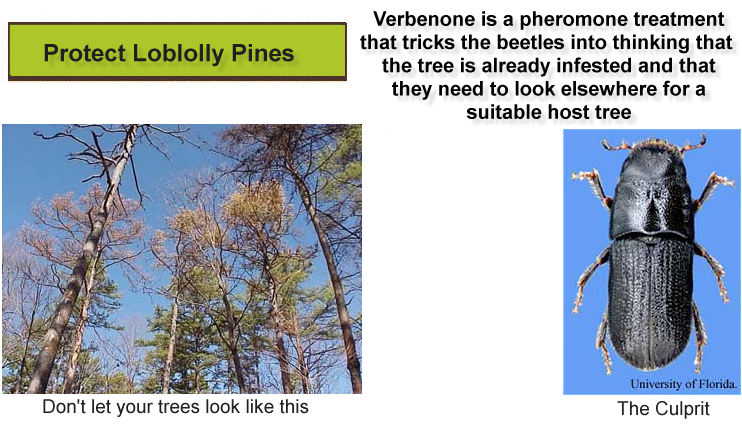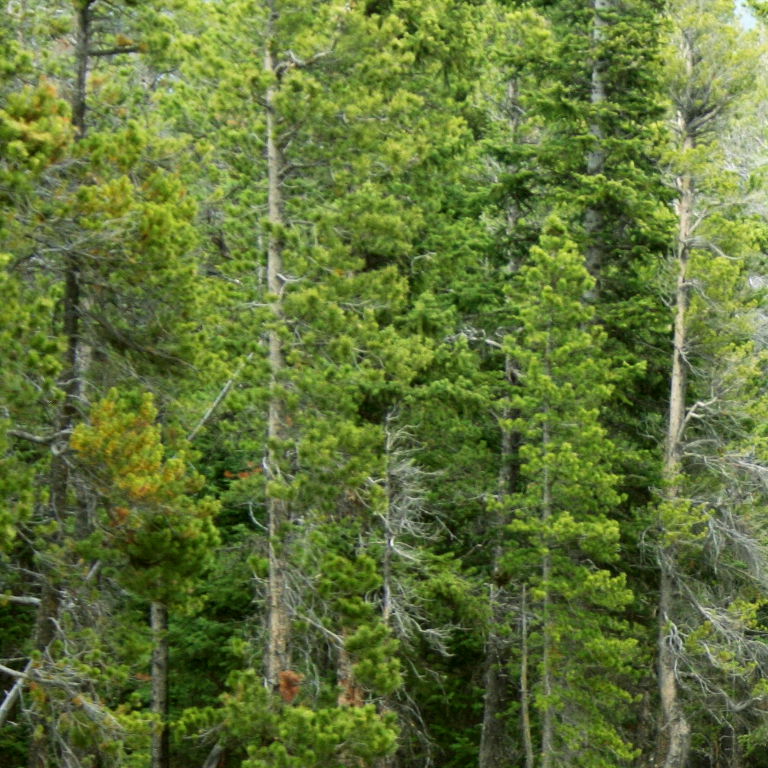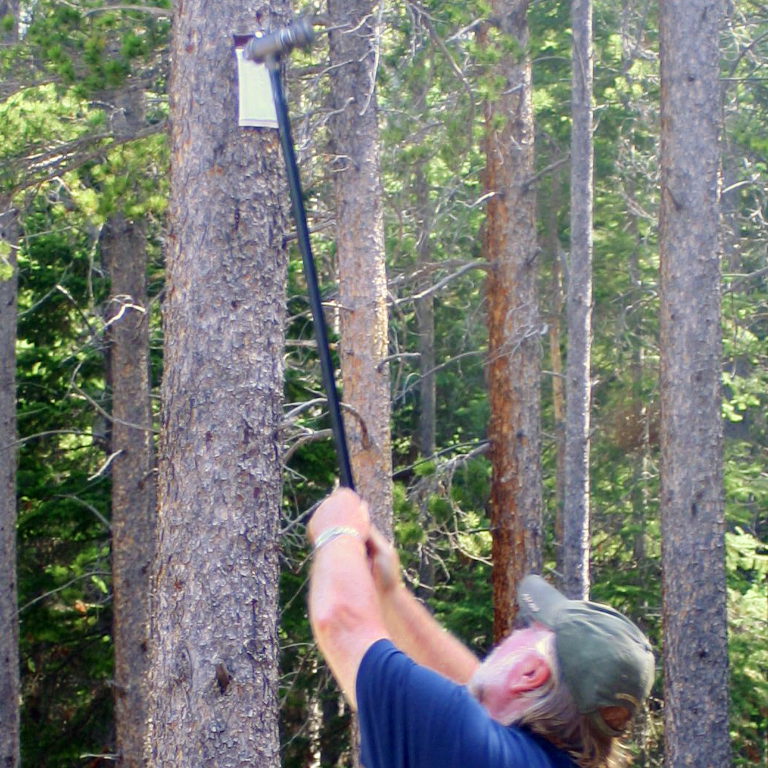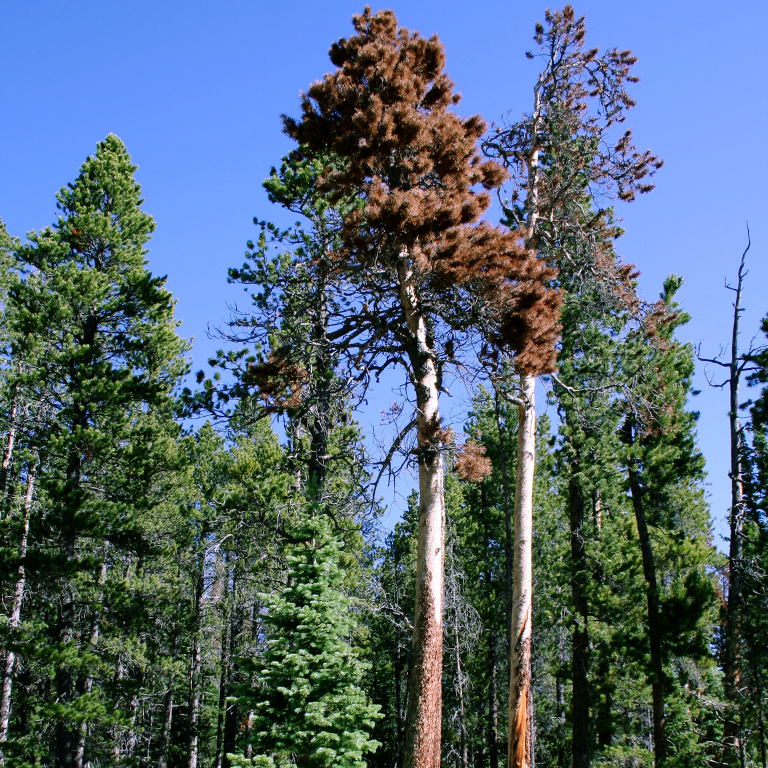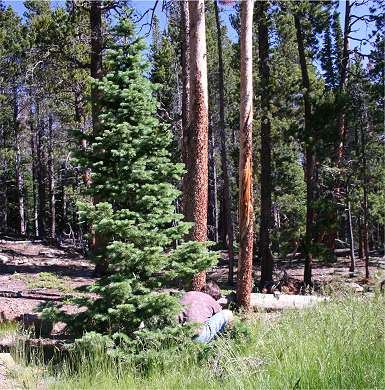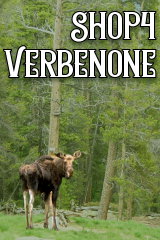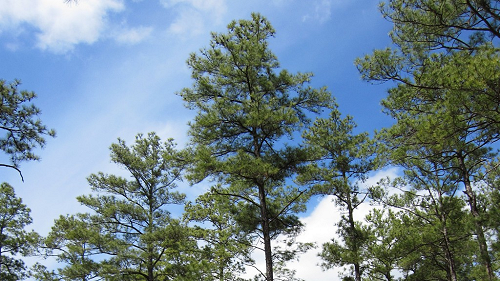
Loblolly Pines, the most prolific species of pine in the United States, suffer from attacks of the Southern Pine Beetle
The loblolly pine grows to a height of 60–90' and a spread of 25–35' at maturity
Loblolly is one of the most challenging trees to treat because it grows so prolifically, so thick, and in such dense old growths that it is hard to get into the heart of a forest to treat the interior trees.
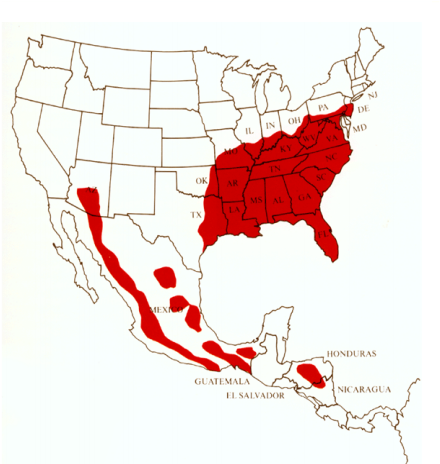
Southern Pine Beetle Affected Area
The Southern Pine Beetle (Dendroctonus frontalis) infests and kills Loblolly pines throughout most of its range in Southern and Eastern United States from middle Texas East across the deep south, up and through Kentucky, West Virginia, the Carolinas and down through Florida. It will also infest shortleaf pine (Pinus echinata Mill.), pond pine (P. serotina Michx.), and Virginia pine (P. virginiana Mill.) (Thatcher and Barry 1982).
A new report states, "New Jersey’s trees are (also) in trouble. Southern Pine Beetle, a bark beetle smaller than a grain of rice, killed pines across the state’s southern forests. In 2010 alone, the beetle destroyed 14,000 acres and continues to spread." It has now moved even further North.
Southern Pine Beetles generally have a short life cycle, making suppressing them difficult - especially in the southern-most states. They start to fly very early in the spring (correlated with the flowering of the Dogwood tree in Florida). In the Gulf Coast region, what we know about the reproductive potential and seasonal habits of the SPB clearly suggests that, to reduce beetle populations, direct control should be applied during the winter to be in place and ready when they reach peak flight in late winter and early Spring.
Verbenone Application dates will vary with latitude and climate but are typically started before the ambient average temperature consistently exceeds 80° F.
In the Coastal South where temperatures are mild, flights recur several times, and re-treatment is required. Spots may remain active throughout the year. SPB can emerge and attack in Dec, Jan, and February in large part undetected because new infestations in the Gulf Coast Regions during the fall, winter, and early Spring are difficult to detect due to inclement weather or wet ground conditions. Consequently, as many as 3-4 consecutive beetle generations may effectively escape control during the very season when the attack:emergence ratio of the insect is at its highest.
SPB attacks certainly begin by early spring and can occur well into autumn; as many as eight generations can occur in one season. Each successive generation attacks nearby live trees. As a result beetle attack resembles an advancing front, much like an army on the attack.
Control during the winter is less problematic in the northern part of the beetle’s range (Tennessee, the Carolinas, Virginia and north). Cold winters tend to restrict beetles to the multiple-tree spots they occupied during the fall; this fact simplifies winter detection. Since the beetles complete only three to five generations per year in this area, overwintering broods seldom emerge before late April or May.
Southern Pine Beetle Biology.
Newly hatched adults leave the tree of their metamorphosis, seeking out larger trees in the surrounding area.
When the adults arrive at their tree of choice, they begin tunnelling under the bark. Soon after initial attack, females emit an aggregation pheromone (frontalin), which attracts males and more females to the tree. This pheromone, in conjunction with host odors stemming from resin exudation at attack points, attracts more SPB to the tree.
Resin under pressure within the tree can successfully force out or "pitch out" beetles if there are only a few beetles and the tree is relatively healthy. (see Pitch Tubes in the image left) However, mass-attacking SPB deplete the resin production capabilities of the tree causing resin flow to cease, after which point the tree is easily overcome.
Females lay fertilized eggs. The bad news is that Parent adults may then re-emerge from the tree one to 20 days following depositing the eggs and proceed to attack the same tree or another (Thatcher et al. 1980). The original eggs, which turn to larvae, develop to produce more egg-laying adults to attack more trees. Additionally, the hatched larvae feed under the bark in the phloem layer, introducing fungi, yeasts, and other organisms that lead to tree death. see See this entomology report from the University of Florida
The Southern Pine Beetle presents more challenge than Mountain Pine beetles or Fir Beetles due to its general geographic location in milder southern climates. SPB attacks begin in early spring or late winter and can occur well into autumn; as many as eight generations can occur in one season making the beetle attack resemble an advancing front, much like an army on the attack. Prophylactic treatments (such as Verbenone) must be used IN FRONT of the "spear" of the attack.
Spots may remain active throughout the year in the lower Gulf Coast. Each successive generation attacks nearby live trees. It is estimated that one infested tree will kill at least two and possibly more trees, and each generation adds to the mortality. Thus the exponential devastation occurs.
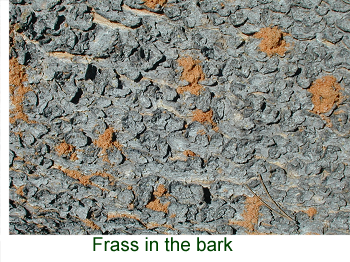
Quick Guide to Signs of Southern Pine Beetle Attack
- Red or yellow boring dust in bark crevices or at base of tree
- Popcorn-like Pitch tube (see image left)
- Presence of clear shot-like holes (like bee-bee holes) on the exterior bark surfaces where SPBs have emerged
- Foliage is dis-colored. Crowns of dying pines change color from green to yellow to red before turning brown and falling from the tree. (Beetles have probably already left.)
As always, the best defence against Southern Pine Beetle is a healthy stand of trees that are able to defend against attack. Proper spacing, basal area, water and removal of brood trees and unhealthy trees are all important.
It is also important to remove and properly dispose of infested trees and slash prior to trying to deter beetle populations from attacking good trees in the stand.
Dense stands of large Loblolly trees are at highest risk of attack There has been some research into direct control using the anti-aggregation pheromone Verbenone, which disrupts beetle aggregation in Mountain Pine Beetles. According to the USDA Forest Service, Southern Research Station, in Louisiana, "disruptant semiochemicals, primarily verbenone, have shown some promise for spot disruption, but they are not used operationally".
If using Verbenone to suppress SPB attack, it seems to be of importance to treat the trees that are on the forefront of the attack (the leading spear that points the direction the infestatino is moving), making a concetrated effort to protect an area IN FRONT of the direction of movement. (Salvage and burning of infested trees is also of paramount importance for reducing tree mortality.)
